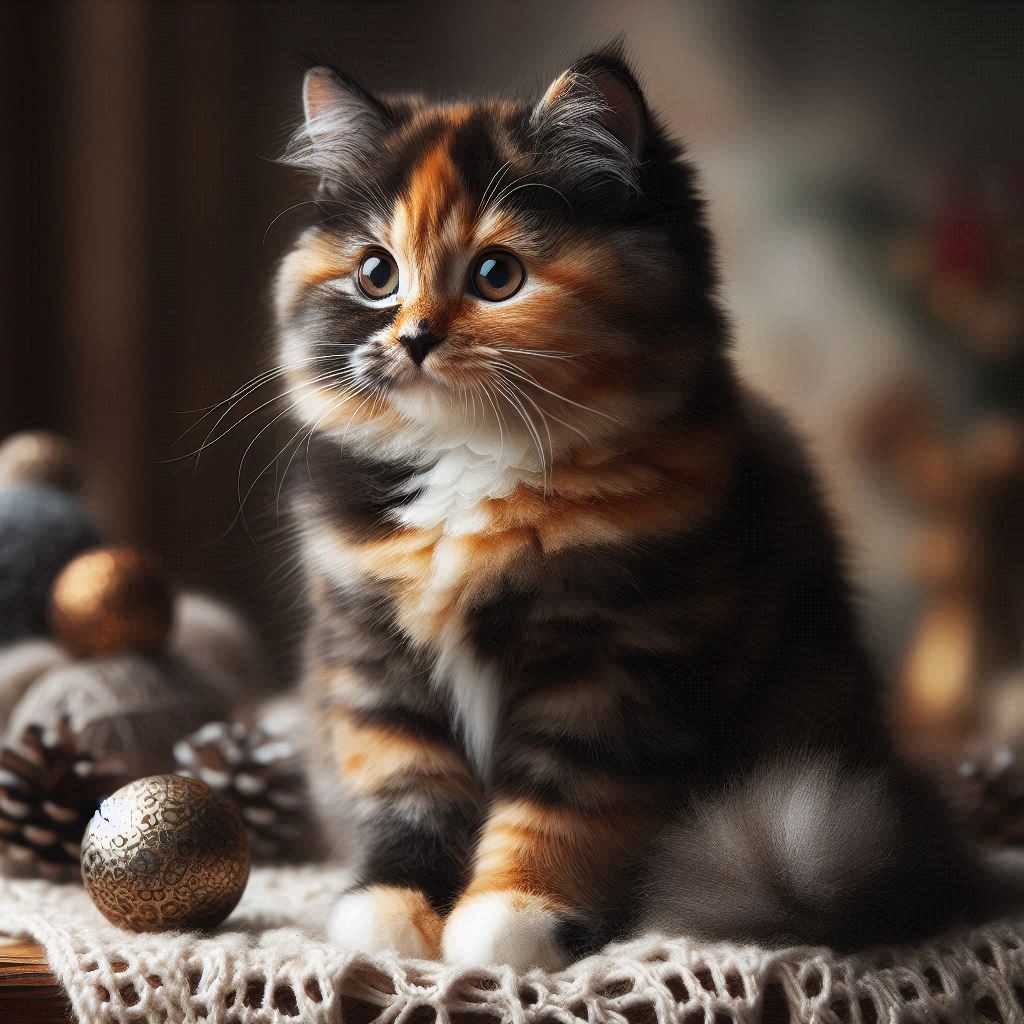Tortoiseshell cats, often referred to as “Torties,” are not a specific breed but are known for their distinctive coat pattern, which is a beautiful blend of black, red, orange, and cream colors. These cats are named after the tortoiseshell material due to their mottled, multi-colored coats. The unique and striking appearance of tortoiseshell cats has made them highly admired among cat enthusiasts worldwide.
In addition to their stunning coats, tortoiseshell cats are known for their strong-willed personalities, often described as having “tortitude.” This combination of beauty and attitude makes Tortoiseshell cats stand out from other felines.
History and Origin of Tortoiseshell Cats
The tortoiseshell coat pattern has been around for centuries and is found in various breeds worldwide. Historically, tortoiseshell cats were often associated with good luck and were even revered in some cultures. For example, in Japan, they were considered to bring good fortune and were kept as talismans to ward off evil spirits.
Tortoiseshell coloring is a result of genetics, and it is most commonly found in female cats due to the genes that control the coat color being carried on the X chromosome. Male tortoiseshell cats are extremely rare, and when they do occur, they are typically sterile because the presence of both orange and black coloring requires an extra X chromosome.
Physical Characteristics of the Tortoiseshell Cat
The most defining feature of a Tortoiseshell cat is its unique coat. However, since tortoiseshell is a color pattern rather than a breed, these cats can come in a variety of shapes, sizes, and physical characteristics depending on their breed or mix.
- Coat Color: Tortoiseshell cats have a blend of two primary colors—black and red (orange). These colors can mix to create various shades of brown, amber, orange, and gold. Sometimes, there are white patches, but typically, tortoiseshell cats have little to no white in their coats. The pattern is usually random, meaning no two tortoiseshell cats look exactly alike.
- Coat Length: The coat length of tortoiseshell cats can vary. Some have short hair, while others, depending on the breed, have medium to long fur. Long-haired tortoiseshell cats can have a luxurious, flowing coat, while short-haired ones have a sleek, shiny appearance.
- Eye Color: Tortoiseshell cats usually have bright, striking eyes that can range in color from green to gold or yellow. The eye color can further enhance their captivating appearance.
- Size and Build: Since tortoiseshell cats are not a specific breed, their size and build can vary widely. They can be small and slender or large and muscular, depending on their breed or genetic background.
Personality and Temperament
Tortoiseshell cats are known for their unique and often strong-willed personalities. This temperament has led to the term “tortitude” being used to describe the typical behavior of a tortoiseshell cat. While every cat is different, many tortoiseshell cat owners report that their cats are particularly feisty, independent, and full of personality.
Affectionate:
Despite their reputation for having strong attitudes, many tortoiseshell cats are affectionate and form strong bonds with their owners. They can be quite loving and enjoy attention, but they often prefer it on their own terms.
Playful and Energetic:
Tortoiseshell cats are typically very active and playful. They enjoy engaging in games, hunting-like behavior, and climbing, which makes them energetic companions.
Independent:
Torties often exhibit an independent streak. They can be quite determined and may display a more headstrong attitude than other cats, but this independence adds to their charm.
Vocal:
Many tortoiseshell cats are known to be vocal, communicating their desires and feelings with an array of meows, purrs, and other sounds.

Caring for a Tortoiseshell Cat
The grooming needs of a tortoiseshell cat depend largely on the length of its coat.
Grooming
For short-haired tortoiseshell cats, grooming is relatively low-maintenance. Long-haired torties require more frequent grooming. Regular brushing (two to three times a week) helps prevent matting and tangles in their fur, keeping their coats looking shiny and healthy.
Exercise and Diet
Like all cats, tortoiseshell cats benefit from a balanced diet and regular exercise. Providing them with interactive toys and space to play ensures they stay mentally stimulated and physically active.
Health and Lifespan
Tortoiseshell cats, as a color pattern, are not prone to any specific health conditions related to their coat. However, their health depends on their genetic makeup and breed.
- Average Lifespan: Tortoiseshell cats generally have a lifespan of 12 to 16 years, though some can live even longer with proper care and a healthy lifestyle.
- Common Health Issues: While tortoiseshell cats are not inherently predisposed to any particular health problems, male tortoiseshell cats (which are rare) can sometimes have genetic issues due to the extra X chromosome required for the tortoiseshell pattern. These male cats are typically sterile and may have health complications.
Breeds That Can Have Tortoiseshell Patterns
Since tortoiseshell is a coat pattern rather than a breed, it can be found in various cat breeds. Some of the breeds that can exhibit the tortoiseshell pattern include:
- American Shorthair
- Persian
- Maine Coon
- British Shorthair
- Sphynx (hairless with tortoiseshell skin patterns)
- Oriental Shorthair
Conclusion
Tortoiseshell cats are known for their bold and beautiful appearance, as well as their dynamic and strong-willed personalities. While not a breed, their distinctive coloration makes them stand out among felines. Whether you’re drawn to their vibrant coats or their lively personalities, tortoiseshell cats are truly one-of-a-kind companions, offering a unique mix of affection, independence, and playfulness.



